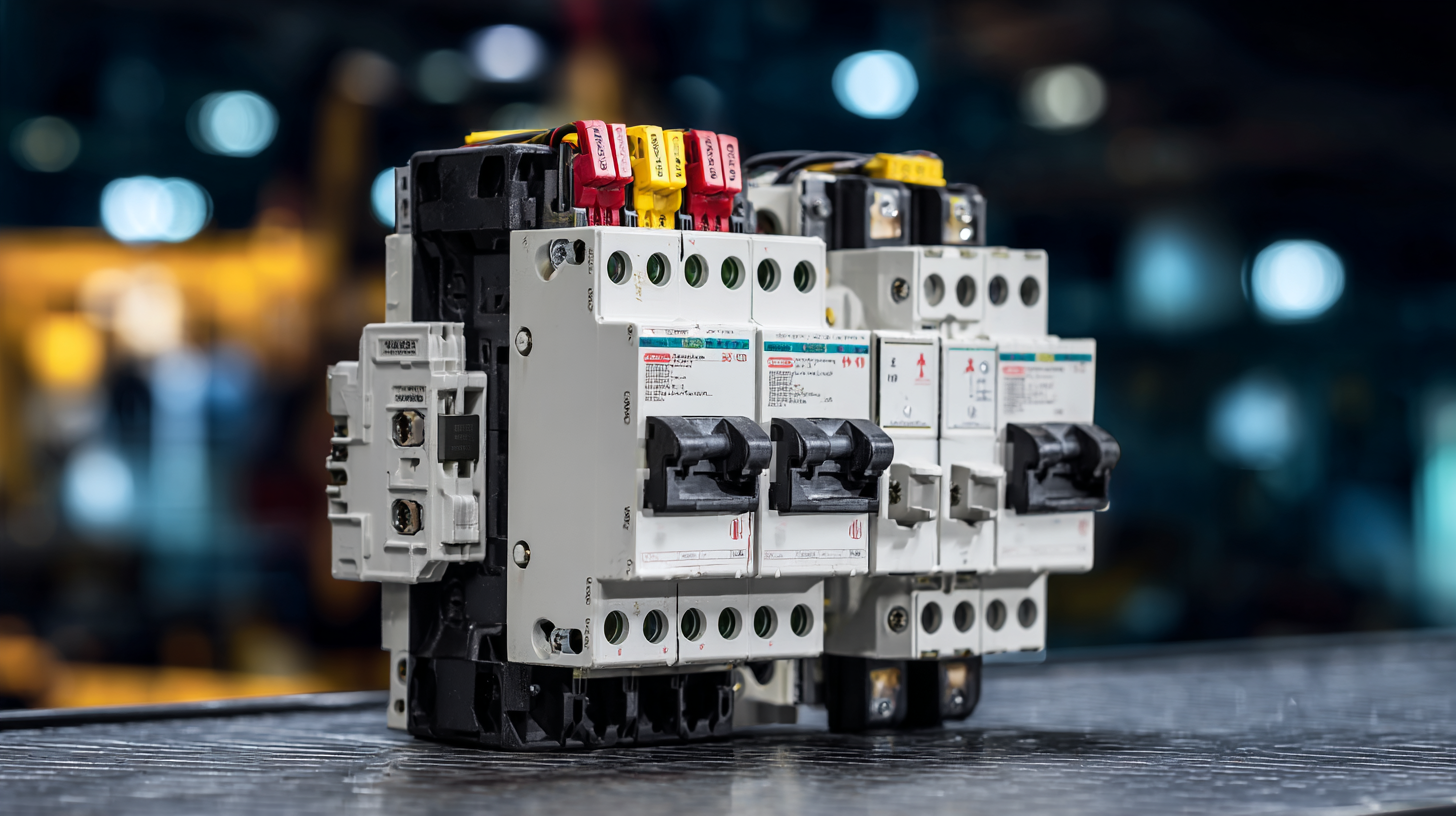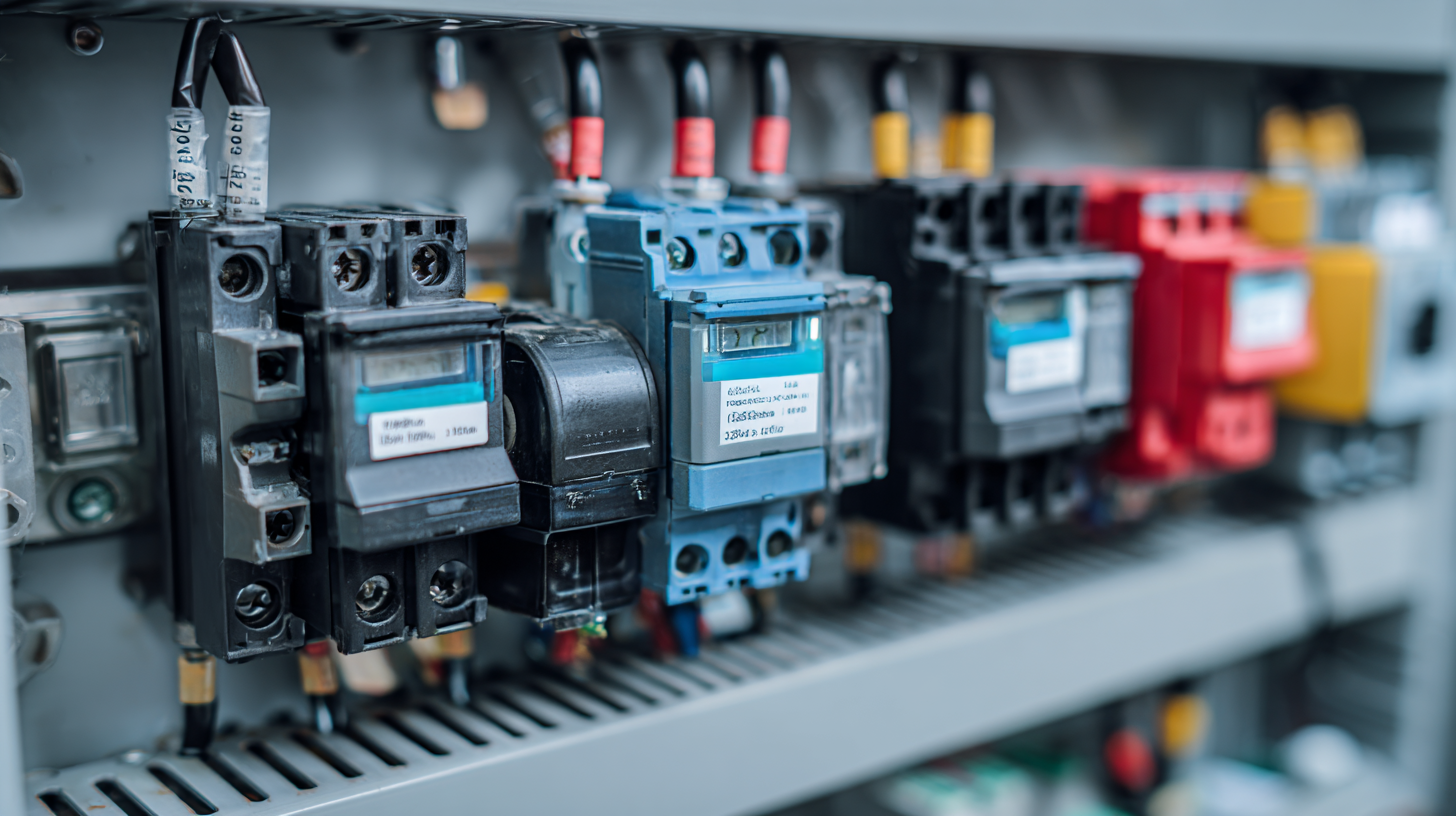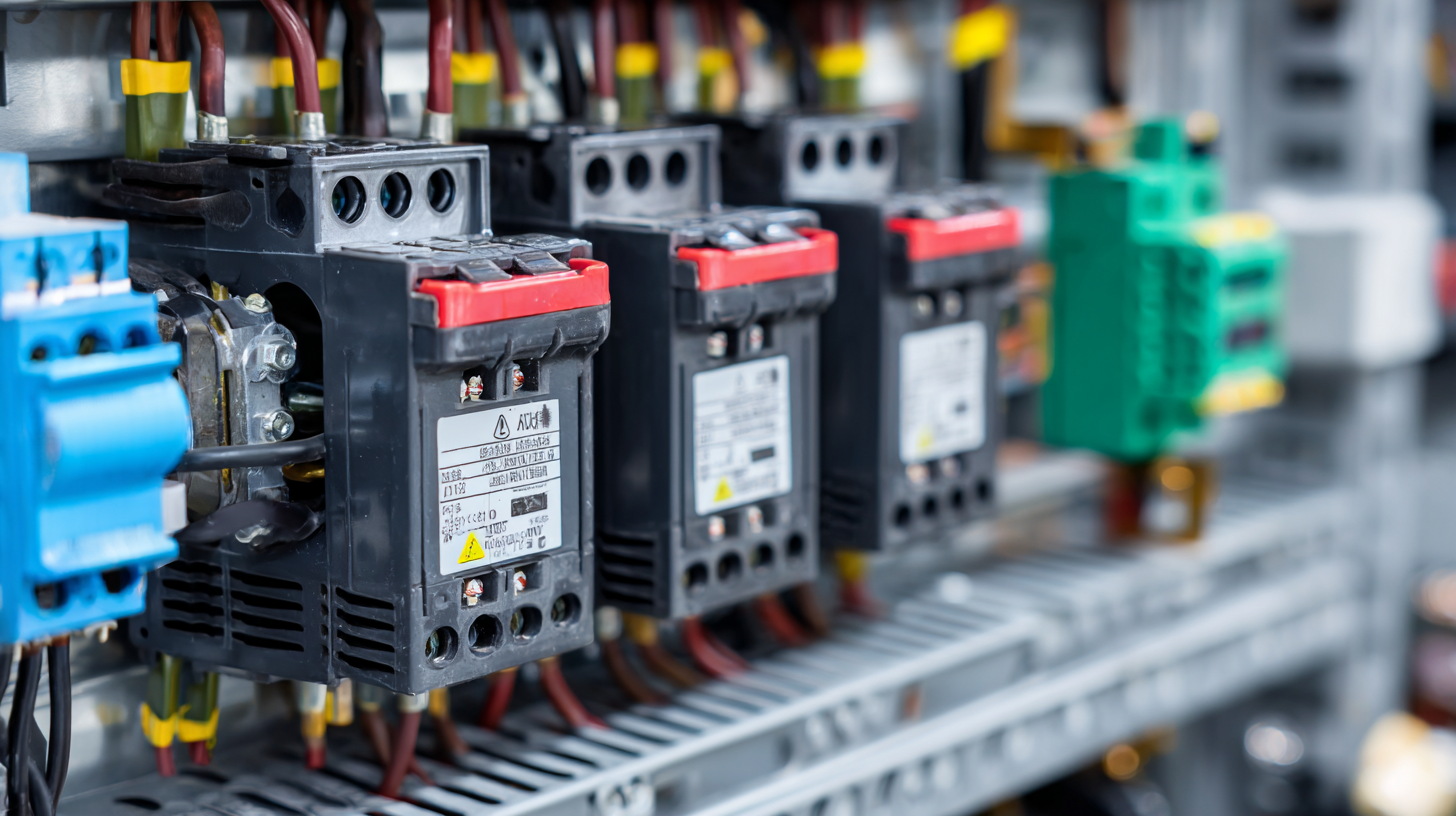
Forecasting the Best AC Contactor Trends for 2025 in the Global Market
As we look ahead to 2025, the global AC Contactor market is poised for significant evolution, driven by advancements in technology and increasing demand for efficient electrical solutions. With a vision of "卓越制造,源自中国,服务全球," manufacturers in China are at the forefront, leveraging their expertise to set new standards in performance and reliability. This blog will explore emerging trends that will shape the AC Contactor landscape, including innovations in design, energy efficiency, and automation integration. As industries worldwide pivot towards sustainable practices and smart technologies, understanding these trends becomes crucial for stakeholders aiming to remain competitive. Join us as we forecast the future of AC Contactors and highlight the pivotal role of Chinese manufacturing in the global market dynamics.

Understanding the Growing Demand for AC Contactors in 2025
As we look towards 2025, the demand for AC contactors is projected to see significant growth, driven by several key factors within the global market. According to a report by Market Research Future, the global AC contactor market is expected to expand at a compound annual growth rate (CAGR) of 6.5% from 2020 to 2025. This surge can be attributed to increasing industrial automation, urbanization, and the rising need for energy-efficient solutions. As businesses strive to optimize operations, the reliance on AC contactors in various applications is set to intensify.
Moreover, the HVAC industry is evolving, with a notable increase in the implementation of smart technologies. A report from Fortune Business Insights indicates that the smart HVAC systems market will witness a CAGR of over 12% in the coming years, further fueling the demand for advanced AC contactors. These devices play a crucial role in enhancing the efficiency and reliability of HVAC systems, making them indispensable in both residential and commercial settings. The push for sustainability and energy conservation is shaping the future of AC contactors, as manufacturers innovate to meet the needs of a changing world.

Key Features to Look for in a High-Quality AC Contactor
 When selecting a high-quality AC contactor, several key features should be prioritized to ensure optimal performance and reliability. First, look for contactors with a robust thermal overload protection mechanism. This feature helps prevent damage from excessive current, enhancing the durability of the unit and maintaining system efficiency. A reliable thermal protection system can significantly extend the lifespan of both the contactor and the connected equipment, making it a crucial consideration for any installation.
When selecting a high-quality AC contactor, several key features should be prioritized to ensure optimal performance and reliability. First, look for contactors with a robust thermal overload protection mechanism. This feature helps prevent damage from excessive current, enhancing the durability of the unit and maintaining system efficiency. A reliable thermal protection system can significantly extend the lifespan of both the contactor and the connected equipment, making it a crucial consideration for any installation.
Another important aspect to consider is the contactor's material. High-quality AC contactors often utilize durable materials that resist corrosion and wear, ensuring consistent operation in various environmental conditions. Additionally, pay attention to the operating voltage range and coil voltage options, as these can greatly influence compatibility with different electrical systems. Opting for a contactor that supports a broad range of voltages adds flexibility to your setup and can simplify future upgrades or modifications. By focusing on these essential features, you can confidently choose an AC contactor that meets both current demands and future trends in the global market.
Identifying Reliable Manufacturers in the Global Market
As we approach 2025, identifying reliable manufacturers of AC contactors in the global market becomes paramount. Companies are increasingly prioritizing suppliers who not only meet high standards of quality but also demonstrate sustainable practices, aligning with their commitments to Environmental, Social, and Governance (ESG) criteria. Strong ESG ratings are essential, as they indicate a manufacturer’s resilience to sustainability risks, enhancing their appeal in a competitive landscape.
Small and medium enterprises (SMEs) play a significant role in the manufacturing sector and can often provide unique advantages, such as agility and localized supply chains. Assessing these manufacturers against evolving technology trends and sustainability benchmarks will be crucial for businesses looking to secure reliable partners for AC contactors. Emphasizing a thorough assessment process, including reviewing financial resilience and sustainability practices, will help businesses navigate the complexities of the global market effectively.
Forecasting the Best AC Contactor Trends for 2025 in the Global Market - Identifying Reliable Manufacturers in the Global Market
| Region | Market Share (%) | Expected Growth Rate (%) | Key Trends |
|---|---|---|---|
| North America | 25% | 5% | Smart Technologies, Energy Efficiency |
| Europe | 30% | 4.5% | Sustainability, Automation |
| Asia-Pacific | 35% | 6% | Urbanization, Increased Demand |
| Middle East & Africa | 10% | 3% | Infrastructure Development |
| Latin America | 5% | 4% | Emerging Markets, Renewable Energy |
Evaluating Compliance Standards and Certifications for AC Contactors
In the evolving landscape of the UK road network, compliance with National Highway Sector Schemes (NHSS)
has become a critical criterion for contractors and subcontractors. These standards ensure that only those who meet rigorous quality and safety benchmarks can undertake work on the roads, directly impacting both infrastructure integrity and public safety. As of 2023, there are 16 certified NHSS schemes covering a variety of services, from roadworks to maintenance, which have been instrumental in elevating industry standards.
To achieve NHSS certification, contractors must first complete a self-assessment against the specific requirements of the relevant scheme. This assessment facilitates professional development by highlighting areas for improvement. Following this, a formal application is submitted to an accredited certification body, which will conduct audits to verify compliance. Recent industry reports indicate that businesses with NHSS certification tend to see a 20% increase in project opportunities, underscoring the competitive advantage it provides.
Tips: Always stay updated with changes to NHSS standards; regular training for staff can significantly improve compliance rates. Moreover, actively seeking feedback from certification bodies can guide improvements in your business practices and establish a reputation for quality and reliability in the competitive contractor landscape. Engaging in collaborative discussions with peers in the industry can also provide valuable insights into best practices and emerging trends.
Top Trends Influencing AC Contactor Innovations in 2025
As we look towards 2025, the AC contactor market is poised for significant transformations driven by key trends that are reshaping the industry. One of the primary influences is the increasing demand for energy-efficient solutions. According to a report by MarketsandMarkets, the global energy-efficient electrical equipment market is projected to reach USD 1.64 trillion by 2025, with AC contactors playing a pivotal role in reducing energy consumption in HVAC systems. This push for efficiency is leading manufacturers to innovate with smart technology that enhances performance while minimizing environmental impact.
Another trend to consider is the integration of IoT technology into AC contactor designs. As automation continues to rise across various sectors, the demand for smart, connected devices is accelerating. A recent analysis from Mordor Intelligence highlights that the IoT in the manufacturing sector is expected to grow at a CAGR of 24.8% from 2020 to 2025. This trend is expected to push AC contactors to incorporate features that allow for real-time monitoring and remote control, significantly improving operational efficiencies for end-users. Additionally, advancements in materials technology are enabling the production of more durable and reliable contactors, which are essential for meeting the rigorous demands of modern applications.
